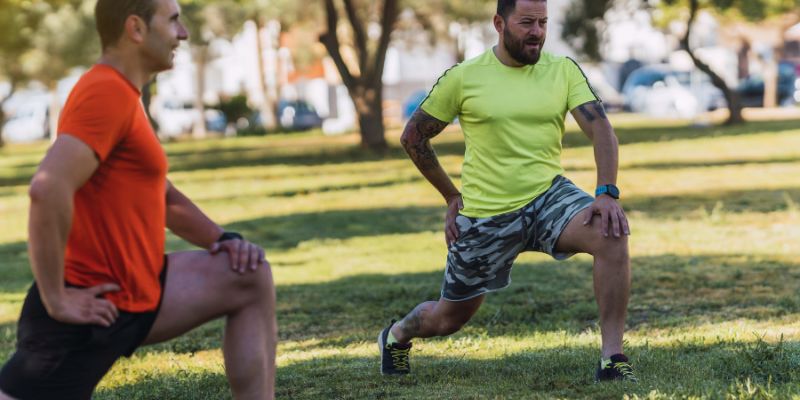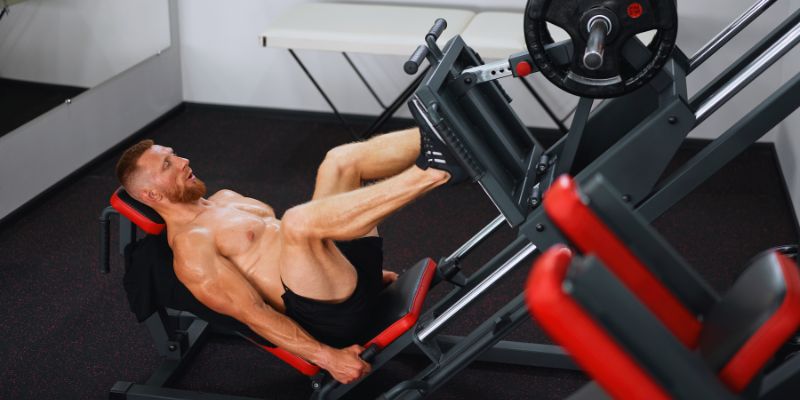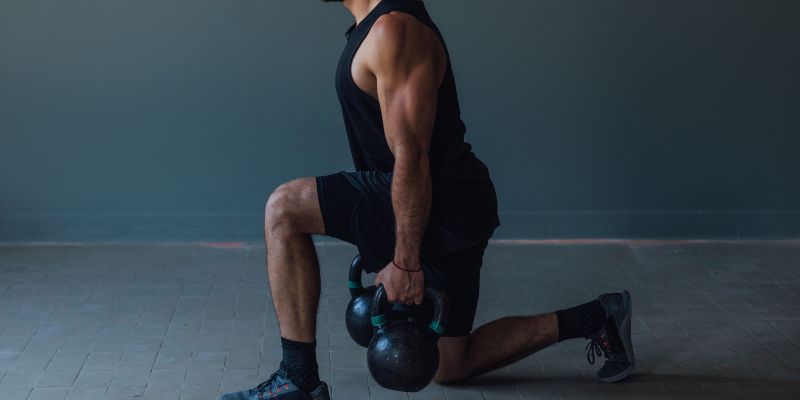How to Get Thicker Thighs with Strength-Building Exercises: An Ultimate Guide
Many desire thinner thighs for a more sculpted and powerful appearance. Strength training improves leg definition and develops muscle. Targeting important muscles such as the quadriceps, hamstrings, and glutes, as well as exercises including squats, lunges, and leg presses, is critical for muscle development, which depends critically on consistency and gradual stimulus. Strength and size grow when one adds additional weight and repetitions over time.
Building muscles also depends much on a balanced diet that includes enough protein. Rest and recovery let muscles develop and help to avoid damage. This guide will help you get larger, more robust thighs. Discover the best exercises, dietary advice, and recovery techniques for long-term effects. Keep dedicated; over time, you will observe differences.
Get Thicker Thighs with Strength-Building Exercises
Below are effective exercises and essential tips for building thicker thighs through strength training and proper muscle growth techniques.
Squats for Thicker Thighs
Squats are among the best workouts for building thighs. They work the glutes, hamstrings, and quadriceps. Including weights helps muscles grow. Bodyweight squats are perfect for novices. Using a dumbbell, go for a Goblet squat to increase strength and challenge. Maximum lower body engagement comes from barbell squats. Wider stance sumo squats work the inner thighs. Three to four sets of ten to twelve repetitions help to define muscles better. The correct form helps prevent injuries. Maintaining good back straightness and knee alignment guarantees efficient muscular activation. Over time, increasing weight causes gradual overload that helps thighs get larger and stronger.
Lunges for Leg Definition
Lunges boost lower body strength and thigh thickness. Working the glutes, hamstrings, and quadriceps increases balance and flexibility. Walking lunges call for stepping forward and dropping the back knee. Reverse lunges and stepping back help to stabilize and ease knee pain. While jump lunges enhance explosiveness for maximum muscle engagement, side lunges strengthen the inner thighs. Doing three sets of ten repetitions on each leg is perfect. Including dumbbells improves resistance, which promotes greater muscle development. Maintaining correct form depends on keeping the torso straight and knees steady. Lunges efficiently aid the thighs to shape and strengthen them.

Leg Press for Strength
The leg press machine tones thigh muscles' bulk. It's a wonderful strength-building activity since it isolates the glutes, hamstrings, and quadriceps. Putting feet low on the platform works well for the quads. Higher foot positions activate the glutes and hamstrings. A broad stance exercises the inner thigh muscles; a narrow stance concentrates on the outer thighs. Starting with a reasonable weight and completing three sets of ten to twelve repetitions guarantees safe development. By avoiding locked knees, one avoids strain and damage. Over time, steadily increasing weight increases thigh strength and growth.

Step-Ups for Leg Growth
For larger thighs and leg strength, step-ups are fantastic. This exercise helps build muscle and increase definition by targeting the glutes and quadriceps. Using a knee-height bench or step raises resistance, therefore stimulating muscles. Using dumbbells increases muscle development and challenges movement. Using the heel helps one target the appropriate muscles by stepping up. Three sets of ten repetitions in each leg guarantee appropriate muscular activation. Additionally, improving balance, coordination, and lower body endurance are step-ups. Including this exercise in your regimen improves general leg strength and helps thighs get thicker and more well-shaped over time.
Deadlifts for Lower Body Power
Deadlifts are great for developing the glutes, hamstrings, and quadriceps. They elongate legs generally and correct posture. Typical deadlifts work several lower-body muscles. Romanian deadlifts center more on the hamstrings. Target the inner thighs with wide-stance deadlifts. Three sets of eight to ten repetitions develop thickness and power. Maintaining the back straight and core engaged helps to avoid injury. Rising the weight guarantees ongoing muscular growth. Deadlifts help the thighs develop both definition and strength.
Resistance Band Exercises
Resistance bands increase thigh workout tension, strengthening and thickening the muscles. Banded squats also increase resistance, forcing muscles to work harder. While seated leg extensions increase quadriceps definition, side leg raises help strengthen the outer thighs. For every movement, three sets of fifteen repetitions tone the muscles. Warm-ups and home exercises are perfect for resistance bands. Their regular strain of muscles helps to improve thigh development gradually.
Diet for Muscle Growth
Growing thigh muscles depends on a healthy diet. With sources including chicken, fish, eggs, tofu, and lentils, protein helps muscle repair and development. Good carbs for exercise include quinoa, sweet potatoes, brown rice, and oats. Olive oil, almonds, and avocados' healthy fats help muscles heal. Muscle performance and general function depend on being hydrated. Eating small, frequent meals all day guarantees consistent nutrients, stimulating muscular development and long-term energy levels. Over time, combining strength exercise with a good diet helps thighs get thicker and more powerful.
Importance of Rest and Recovery
Muscles develop during rest, not just during exercise. Good recuperation lets them grow and strengthen properly. Each night's 7 to 9 hours of sleep helps muscles repair. Rest days help avoid overtraining and injury, so they guarantee constant improvement. Foam rolling and stretching help to increase flexibility and lessen pain. One should have one to two weekly rest days for adequate muscle healing. Reducing too much effort helps to avoid tiredness and promotes consistent development of the thighs. Striking a balance between workouts and recovery guarantees stronger thighs over time. Best outcomes come from consistency, rest, and smart training.
Conclusion:
Thinning thighs call for consistent strength training and a diet. Muscles are developed through deadlifts, lunges, leg presses, and squats. Progressive overload increases resistance, thereby enhancing muscular development and definition. While rest days let muscles heal and expand, a diet heavy in proteins helps recuperation. Foose rolling and stretching increase flexibility and help to avoid pain. Maintaining regularity in eating and exercise yields obvious changes over time. Anybody can get larger, stronger thighs by using these workouts and advice. Long-lasting achievement depends mostly on dedication and patience.












